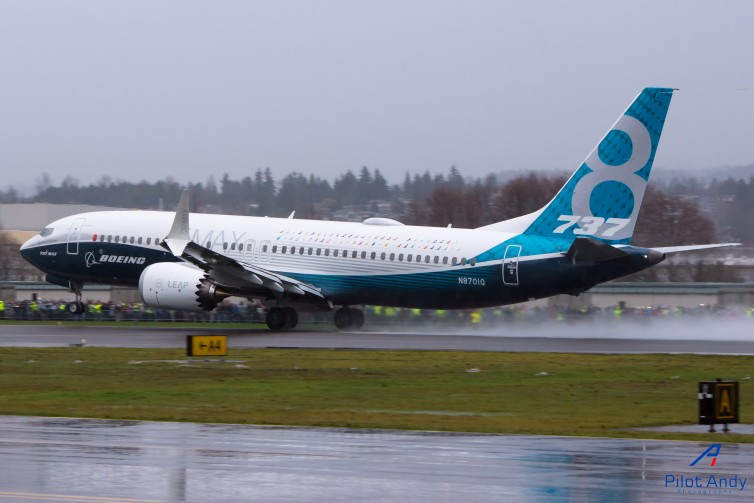
The first 737 MAX takes off from Renton – Photo: Chu-Yi Chuang
Yesterday, the Boeing 737 MAX successfully completed its first flight — and landing. It took off at 9:46 am (PST) to the cheers of several thousand Boeing employees and media. Wait… wasn’t that earlier than planned — it sure was!
I often poke fun of “Boeing time,” which refers to them often being late for test flights. I might not be able to use the term anymore. We will see. Either way, I was quite impressed that they took off early, but they also had some motivation — the weather.
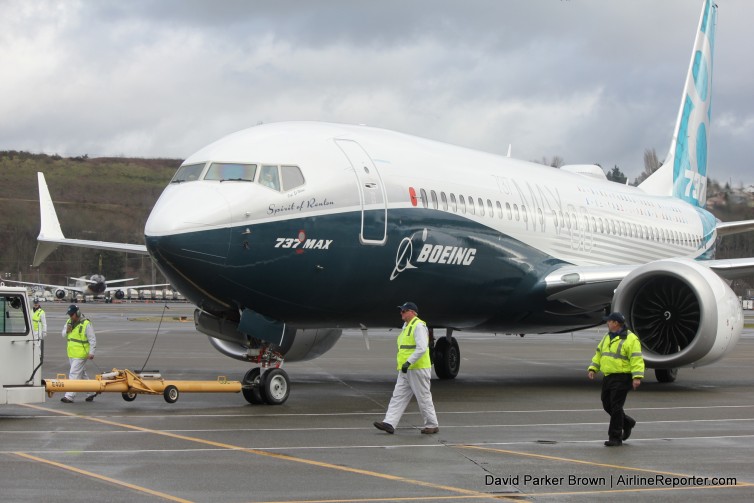
The first Boeing 737 MAX after landing at Boeing Field
The weather reports for the day did not look great. In the morning, it was overcast and raining. Boeing wanted to complete its almost three-hour test flight, and land at Boeing Field (BFI) before things got worse. It all worked out. It doesn’t mean I kept dry, but it was well worth it!
- The local KIRO helicopter does a fly-by
- Boeing employees watch as the first MAX takes off
- Boeing flew a sign over the employees thanking them
BOEING 737 MAX FIRST FLIGHT: The media experience
I have been lucky enough to attend the first flight of both the Boeing 787 and 747-8I. I have to say that all three experiences were mostly similar, yet with nuanced differences. With the 737 MAX, we first met up at a Boeing parking lot, loaded up on a bus, and headed over to Renton Municipal Airport (where all 737s are built). At this point it was pouring rain, and my camera oddly doesn’t like rain — oh well. We were led to sort of trailer with an open side (that sounds way worse than it was). This is what we would call home for takeoff.
As we got settled, about 4,000 Boeing employees gathered along the airfield to get prepared to see their plane fly for the first time. As the time neared, we actually couldn’t see the aircraft, and I was actually watching Twitter to see the engine start up, and taxi to the runway. As soon as the MAX lined up, I could see it, but couldn’t hear it. As it started moving forward, the Boeing employees started cheering. I thought their noise was the reason why I still couldn’t hear the engines.
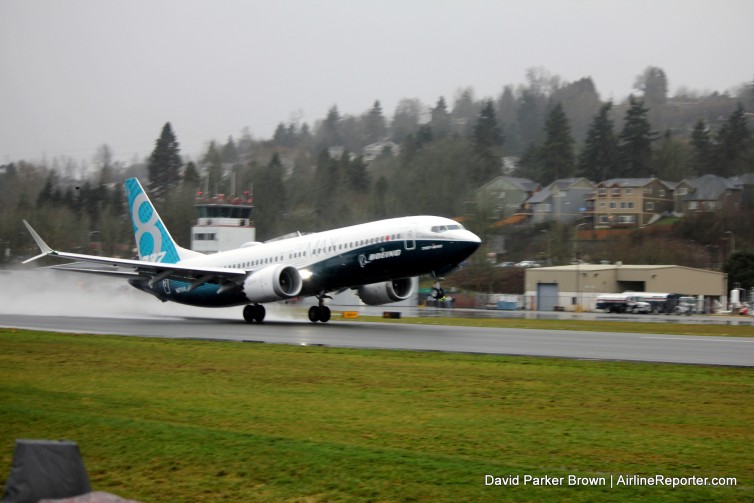
The 737-MAX taking off for its first flight
Then the first 737 MAX lifted off right about where we were located. I finally could make out the CFM LEAP-1B engines. I realized it wasn’t because of the cheering that I couldn’t hear them, but that they were quiet — very quiet. Sure, the lift off (and quiet engines) were all good enough, but hearing the cheers, excitement, and pride coming from the employees was beyond powerful. It was nearly impossible for anyone there not to get chills.
Not surprisingly, the plane took off quickly. With only two pilots, some test equipment, and fuel, it was light. After the lift off, we were escorted back to the bus and made our way over to Boeing Field. We had a quick lunch before heading back outside to the ramp to set up again for the landing. But what was this? SUN?! Hot damn… that is awesome. Now, we aren’t talking LA sun in the summer, but seeing some blue skies, in Seattle, in January was good enough for me.
- 737 flight line as the MAX and chase plane get close
- 737 flight line as the MAX and chase plane get close
- The 737 MAX being towed into place
We took our positions and it wasn’t long until we could see the MAX and chase plane in the distance. Even with the landing, it was much quieter than the 737NG. Not just in a marketing sort of way or even some numbers thrown around, but an obvious difference that most of you would easily notice. That was cool.
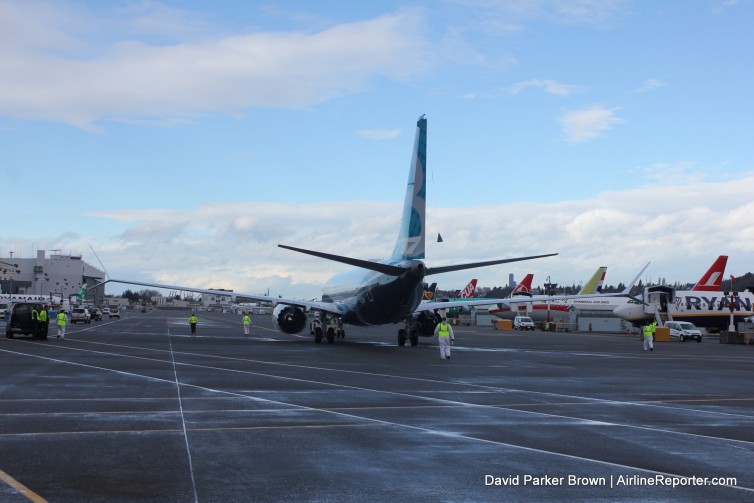
The first 737 MAX 8 being towed down the flight line
Then we were herded into a hangar while the aircraft was slowly towed over. I wish it would have moved on its own power (to keep listening to those engines), but I guess… safety and stuff. Once the pilots de-planned and more pictures were taken, the press conference began, but did not last long. People then started leaving and the 737 MAX was towed down the 737 flight line. That seemed fitting, it passing all those 737NGs to sort of show off to the previous generation.
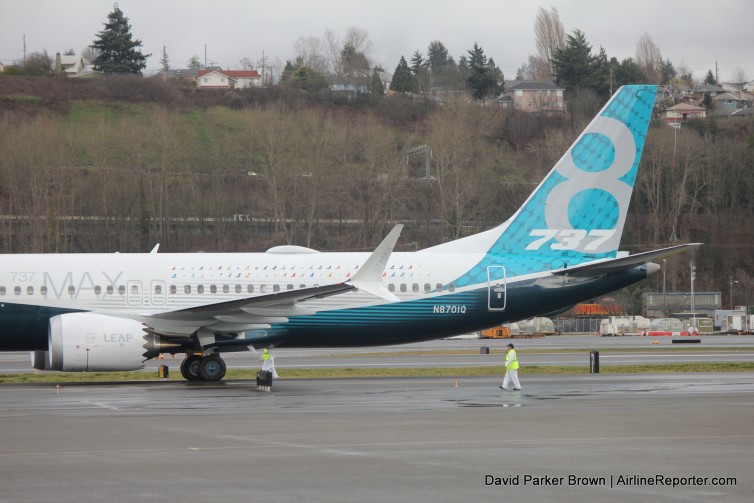
The tail shining in the sun… yes… sun!
BOEING 737 MAX FIRST FLIGHT: Background on the plane
The Boeing 737 is not a rare bird. One takes off or lands every two seconds. That is around 7.5 million takeoffs per year — insane. So why make such a big deal about this flight? For the lay person, the new 737 MAX might not look any different from a 737 Next Generation model (especially with the Scimitar winglets).
As we stated in our previous 737 MAX story: The new aircraft is the fourth generation of the venerable 737, and will replace the 737 Next Generation (or 737 NG). The first 737 first flew in April 1967 and, although it might have the same name and a similar appearance, the aircraft has changed dramatically over the years. The MAX will come in three main flavors: the MAX 7, MAX 8, and MAX 9.
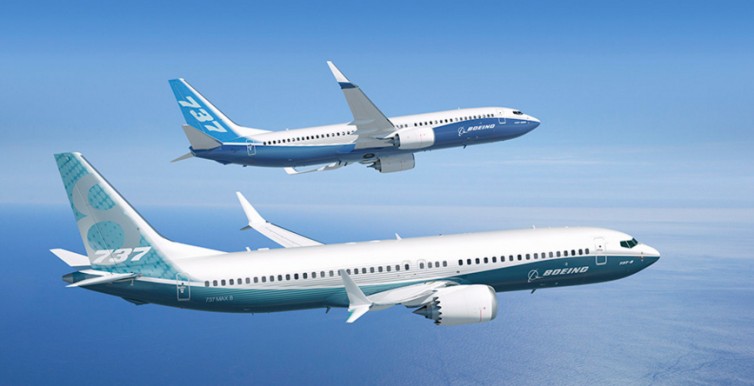
Showing the 737 MAX 8 flying next to the 737-800 NG – Image: Boeing
One of the biggest selling points of the 737 MAX is its efficiency. The aircraft realizes fuel savings through the use of the CFM International LEAP-1B engine. This engine incorporates many of the efficiency features of the GEnx engine, from which it was derived. In addition, the wing shape, engine nacelle, and the engine’s forward mounting position all work to smoothly direct air into and around the engine, providing additional efficiency. Other fuel savings come from reduced weight and improved aerodynamics (including the new Advanced Technology winglet).
- New 737 MAX winglet
- The 737 MAX flight deck
- The 737 MAX engine
Boeing claims the 737 MAX will have a 20% increase in efficiency over the 737NG and that it will be 8% more efficient than its closest competitor, the A320neo. The aircraft will save airlines money (which they will hopefully pass onto their customers).
Other selling points of the new 737 are a 40% reduction in noise, the Boeing Sky Interior (which will now be standard), and the option for the roomier Space Bins.
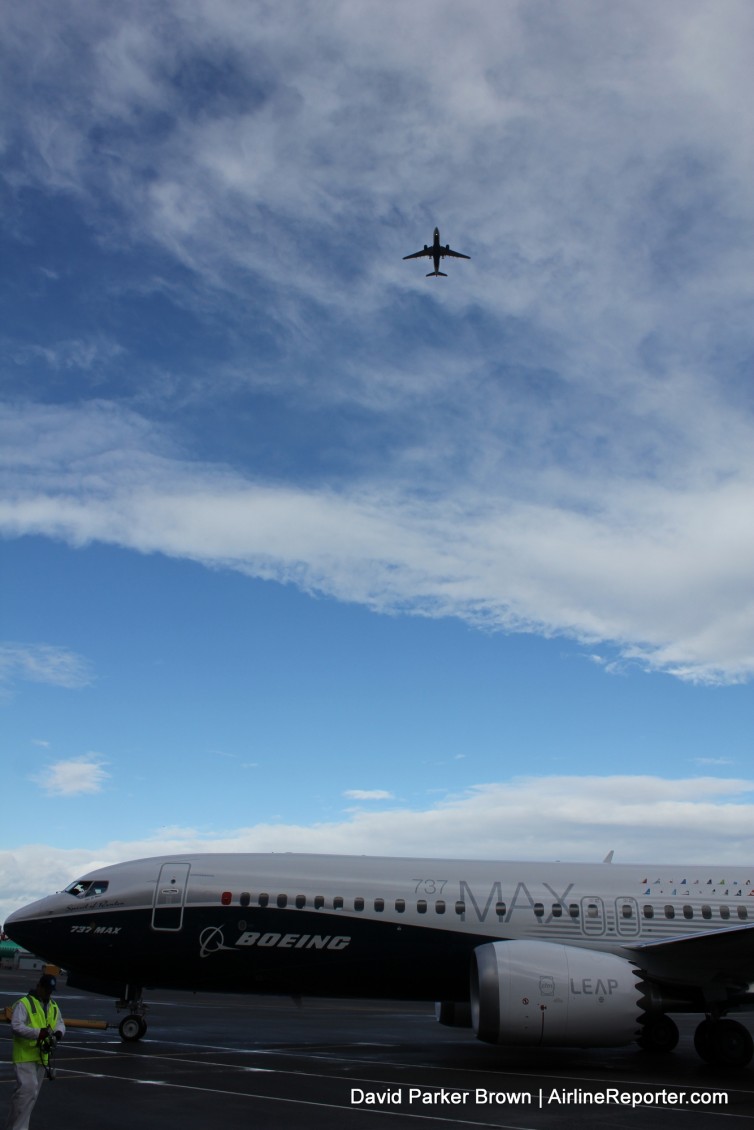
A flight heading to SEA over the MAX
Boeing hopes that after flying the first MAX in early 2016, the first delivery to their launch customer, Southwest Airlines (who has 200 MAXs on order and another 191 options), will occur during the third quarter of 2017.
See our gallery of the Boeing 737 MAX 8 in the factory and during the roll out ceremony.
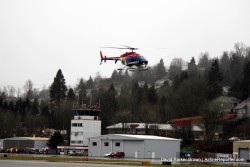
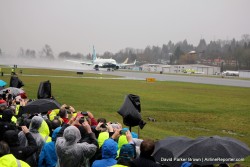
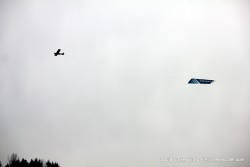
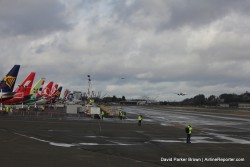
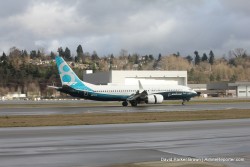
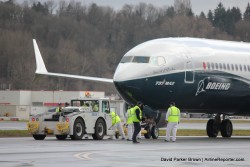
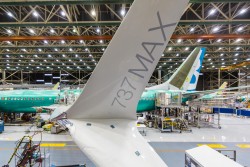
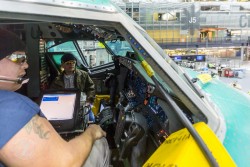
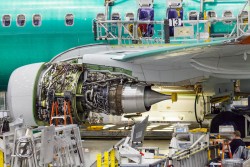
Thank you Dave Parker Brown. The talking points were the low engine noise and that is a great sign for the Boeing 737.
congrats to Boeing on a successful flight. it may sound odd but I’m most excited about Norwegians’ plan to send this a cross the Atlantic. it won’t be the most comfortable flight but if they can bring down fares across the Atlantic I’m interested. personally the 320neo looks to be more comfortable but you got to love the extra range and efficiency of the 737 max
I wonder if Norwegian is successful if we’ll see southwest trans atlantic: BWI is begging for international flights and soon you’ll be able to reach all the peirs behind security, may just be a matter of time
I love the look of the serrated rear of the engine cowling. Does this serve a purpose, or is it to make new Boeings look cooler (and I am down with them looking cooler!)
It’s for noise abatement, 787 is the same, as is Airbus and Bombardier
David,
What a sexy looking machine. Airbus, eat your heart out!! Any specs on the new engines?? The 757s had the best thrust/weight ratio of any commercial airplane which is why it was so widely used at airports like SNA. That ratio was assuming full airplane at max power which of course was rarely used except at SNA and with tailwinds…….Bill
Typical for a series plane, the engines are overpowered and de rated on the 700, about right for 800, a little weak on the 900. The larger bypass ratio however let’s the plane climb faster than the trust ratio would have you think.
Personally I think this plane is just more of the same, shame the clean sheet replacement is years and years away. The 737-800 really hit the sweat spot for operations, but those narrowest in class economy are a bummer…